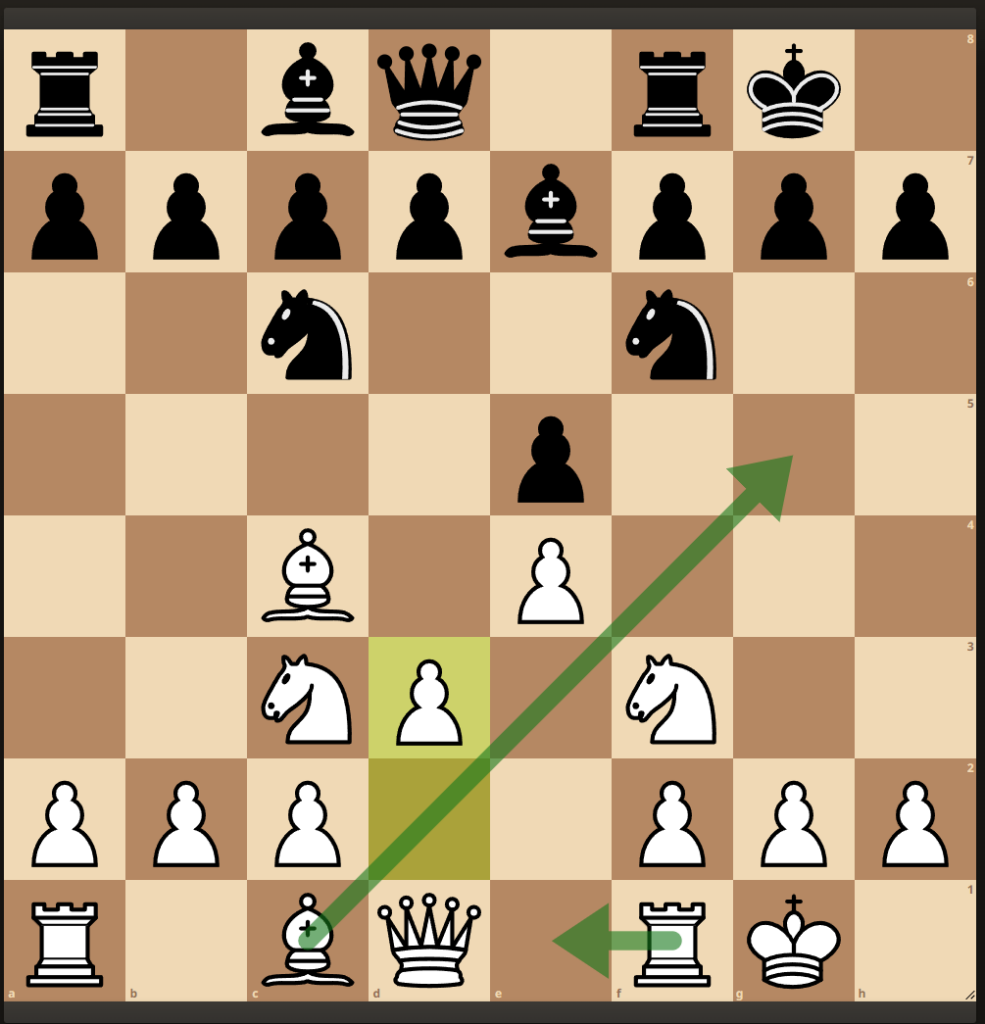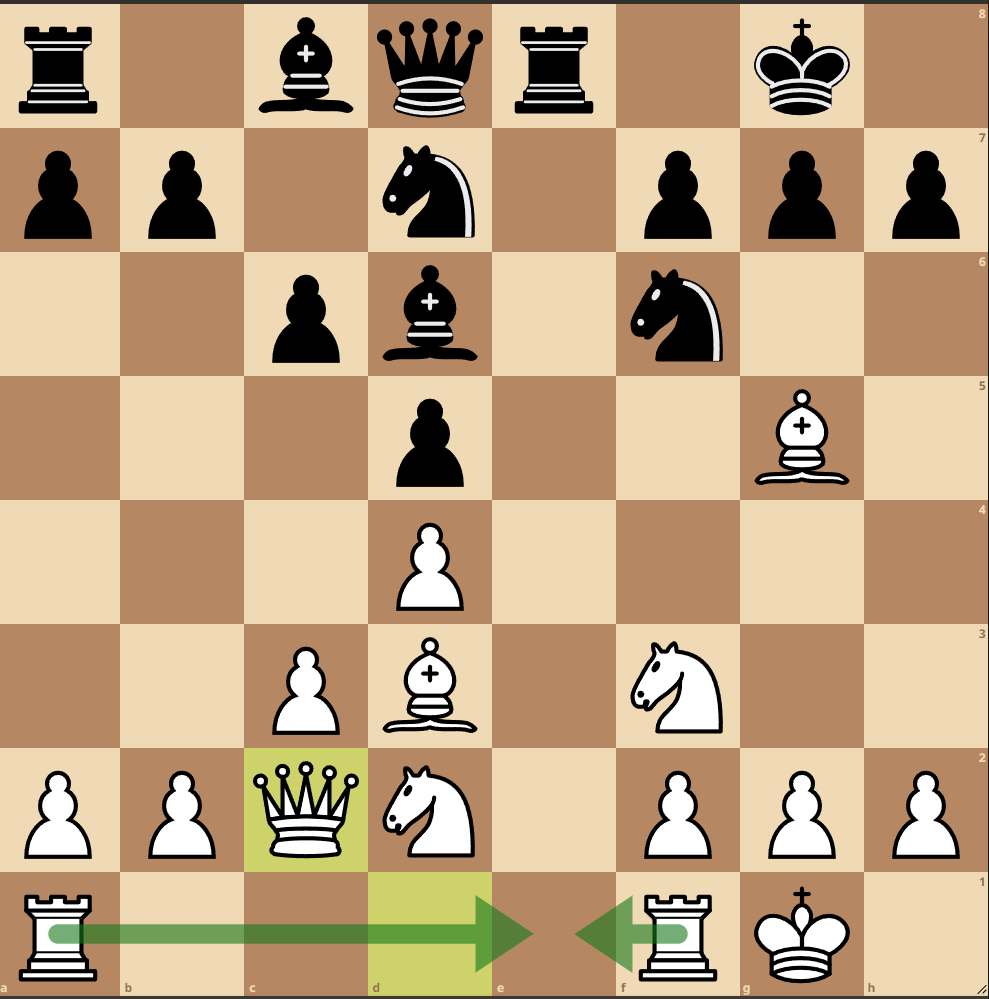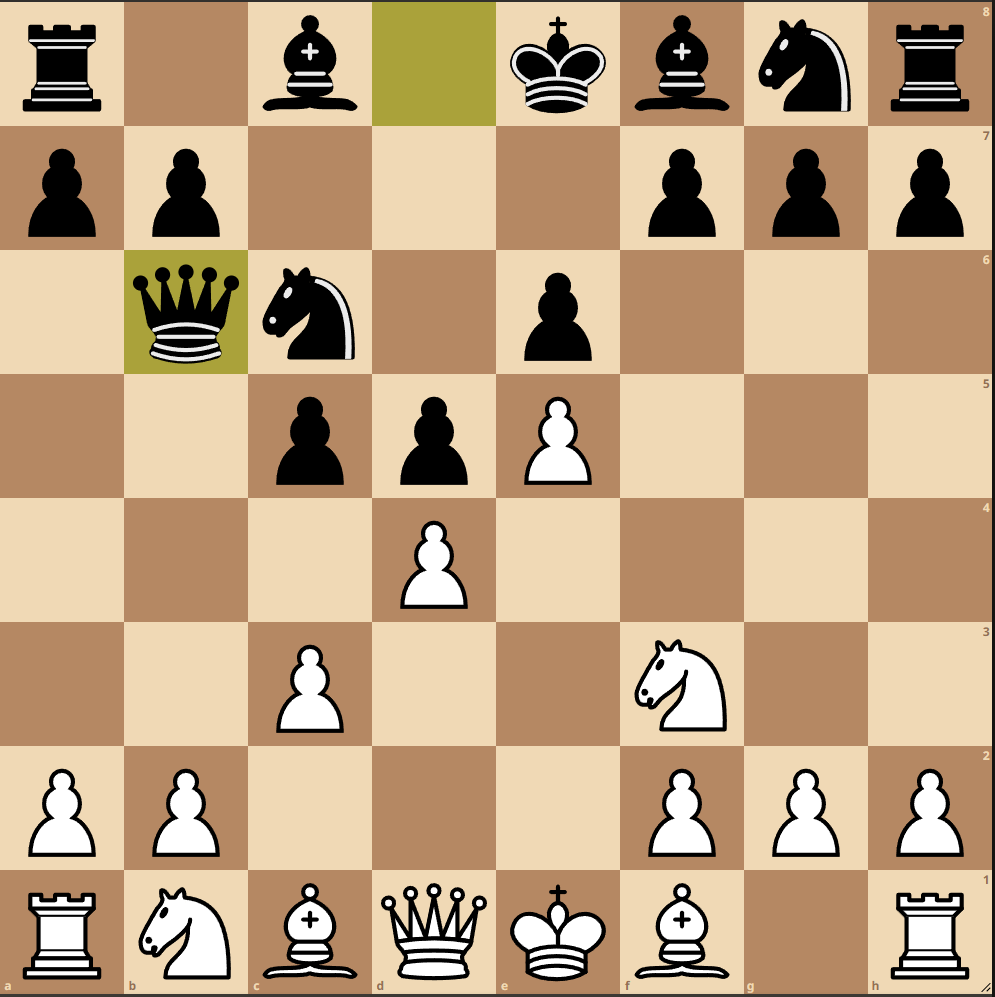I get often asked: “Are there any beginner-friendly chess openings you recommend?”
Yes, there are. If you search for them, this article is perfect for you.
But be aware that there isn’t a single best chess opening for beginners. But there are three key traits you need to look out for in an opening, especially if you just started playing chess. If you can answer the following three questions with yes, then the opening you are looking at is probably good for you.
The 3 key Traits of chess openings for beginners
1) Can I develop logically in this opening?
2) Is this opening plan-based?
3) Am I avoiding only playing for tricks?
And then there is one big thing you need to avoid:
Move by move theory!
Countless opening courses try to sell Grandmaster’s opening theory to beginners. But that is a total overkill. You will not only get overwhelmed but also be unable to remember & apply this opening theory. So stick to the three principles outlined in this article, and you will:
- Be less overwhelmed
- Have more time to study other parts of Chess (mainly tactics!)
- Win games thanks to your own skills and not thanks to memorizing engine lines
To help you avoid spending countless hours and hard-earned money on even more opening courses, I have added a short & simple Beginner Opening repertoire at the end of the article.
For free!
But first, let me explain the three key Opening traits in more detail.
And in case you haven’t read my article on the key Opening Strategy yet, read that first because those are the basics we build on here.
Chess Openings for Beginners Trait #1: Logical Development Moves
The main goal of the opening is to activate your pieces and get your king into safety. Any opening that gets this done with logical moves is great for you. You want to avoid having to find complicated maneuvers or sophisticated ideas to bring your pieces out. This often leads to basic mistakes and you only play with half of your pieces.
Imagine a football team only playing 5 players against 11 of the opposing team. This won’t go well for long. It is the same in chess.

If you always play with fewer pieces than your opponent’s, you will end up losing most games. Typically in open positions, you will find good squares for your pieces easily. When the pawn structures get complicated and closed, it will be much harder to find a good square for your pieces.
As 1.e4 leads more frequently to open positions, this move is mostly recommended for beginners with the White pieces. After the most frequent move 1…e5 you will be able to develop both your Knights (f3/c3), your light-squared Bishop (to c4), and castle quickly.

There is really not much that can go wrong until then.
On rather closed openings like the French and Caro-Kann, I recommend keeping things as simple as possible and trading on d5 on move 3. This way you will get again logical piece development in a rather symmetrical structure. You will have time to study complex structures later on in your chess journey (if you want!).
Chess Openings for Beginners Trait #2: Plan-Based Openings
A big issue with most opening courses is that they are very move-by-move. As outlined above, this is the opposite of what you crave as a beginner. It is not fun to start chess and then have to immediately remember dozens of moves just to start out.
Instead, you want to learn and play an opening that is more based on plans. Once you know where your pieces usually stand best, you are ready to play, even if your opponent does something non-standard. You will realize that on the beginner level, it is normal for your opponents to play non-standard moves. You can’t memorize the right move against every possible counter from your opponent.
So it is way more effective to learn the main plans and then apply this knowledge even if your opponent goes off-grid very quickly. Let’s take the French exchange variation as an example. The development for White is quite simple to understand: Bf1-d3, Ng1-f3, 0-0, c2-c3 (protecting d4!), Bc1-g5/f4, Nb1-d2, Qd1-c2 are all very standard.

Now, this does not mean you will have to follow them in this order in any given game. But if your opponent just makes a random meaningless move like a7-a6, you won’t be totally out of your concept because “this isn’t theory anymore”. Instead, you proceed with one of the above-mentioned moves.
If, on the other side, you will play 3.e5 and enter the so-called advanced-french variation, every move counts. Black immediately attacks your center, and you need to know how to defend. Let’s look at one of the main positions in the French advance variation. What should White do here?

The main move is 6.a2-a3. That is quite deep! The idea is to play b2-b4 and to force black to take on d4. That’s not something that immediately comes to mind. Black responds with Nh6!?, another very unorthodox move. Going wrong here is very easy for both sides if you don’t know exactly what you should do.
In the diagram above, moves like 6.Qb3, dxc5, Na3, b3, and Be3 have all been played more than 50,000 times on Lichess. After all of those, White is worse already! Choosing the wrong kind of line will force you to know a lot of theory early on. It is smarter to choose rather simple lines and work on Tactics & positional understanding first.
Chess Openings for Beginners Trait #3: Don’t Rely On Tricks
Opening-trick videos work very well on YouTube. The promised adrenaline of winning quickly without your own effort is hard to resist. But sadly, this approach does not work in the mid-to-long term.
Trick openings are by nature, move-by-move. One of the most famous tricks is the scholars’ checkmate. You bring out your Queen early to a square she doesn’t really have a good future on, just in the hopes your opponent does not see the checkmate threat on f7.
But as Beth Harmon in Queen’s Gambit (a Netflix series on Chess you must watch!), you will only fall once for this silly trick as black. When the black player knows how to defend (and it is very easy to learn that), you will have a strange piece placement and no logical plans.

I had a student who was very afraid of losing against these trick openings. After some mental work and just a few opening principles, this is what she now regularly does with people trying to trick her in the opening.
So if your goal is to get better at chess, then stay away from trick openings. It might be fun to use a trick from time to time against your friends, but don’t make it your go-to opening.
Instead of relying on your opponent missing a trivial threat, try to improve your skills and outplay your opponents. This is way more efficient and lasting because you can win in any opening with any color if you are just the better player.
Recommended Openings (For Beginners)
Knowing what makes a good opening, you are ready to get concrete advice on openings that are very suitable for Beginners. Note that I will only recommend one simple repertoire here, but there are many that fit the bill.
Why don’t I list them all?
First, there is so much FOMO in the chess world on openings (because people want to sell their courses!) that I try to keep my recommendations as simple and short as possible. Second, there are so many good openings that it is nearly impossible to list them all.
Two things are key here:
1) You only need one opening! If you don’t rely on silly tricks, all you need is a bunch of ideas in your standard opening. That is it for the moment. If you love studying openings, then feel free to learn more. But you don’t have to know multiple openings to increase your rating (I basically only played 1 opening until I reached the IM title).
2) There is no “best” opening. Stop searching for it because the search won’t ever end. Pick a decent one and focus on other things that matter more if you really want to improve your chess.
OK, so now, here we go.
Recommended Beginner Openings For White
Play 1.e4 as recommended before. Here are the basic ideas on all common responses:
against 1…e5 play the Italian Opening with 2.Nf3 Nc6 3.Bc4. Develop as mentioned above.
against 1…e6 play 2.d4 d5 3.exd5. Now, after exd5 again develop as mentioned above.
against 1…c6 play 2.d5 d5 3.exd5 cxd5. This is a little different from 1…e6, as Black has a pawn on e7, not c7 this time. Still your development looks very similar: Bf1-d3, Ng1-f3, 0-0, Bc1-g5/f4/e3, Nb1-d2, c2-c3, Qd1-c2/e2, Ra1-d1, Rf1-e1.
Against 1…d5 trade that pawn and gladly win a Tempo on the early Queen exit with Nc3 (hitting d5). Then play Nf3, d2-d4, Bc4 (sometimes e2 is also fine), and castle short. Your Bc1 usually goes to e3/f4/g5.
against 1…c5 you can get a standard development of Nf3, d2-d4, Nf3xd4, Be2, Nc3, 0-0, Be3, Qd2.
Recommended Beginner Openings For Black
vs 1.e4 play 1…e5. You will mostly proceed with Nb8-c6, Ng8-f6, Bf8-e7, 0-0, d7-d6 and develop your Bishop on c8 to either g4 (if possible) or d7/e6, depending on where White’s pieces stand. If White plays d2-d4 early, taking exd4 is mostly the right response.
vs 1.d4 play 1…d5. Now, after 2.c4, protect your pawn with e7-e6. This position will be a little bit more closed, but you still have quite standard plans: Ng8-f6, Bf8-e7, 0-0, Nb8-d7. The issue is your Bishop on c8. You can try to get it out by playing b7-b6 and Bc8-b7 or by trading dxc4, moving your Knight from d7, and playing Bd7.
This is basically all the concrete opening knowledge you need in order to reach 1200 rating points online. From there on, you can slowly expand your knowledge. You can head over to my Lichess study with both those files included and repeat them whenever you need to do so. You can also clone the study and go deeper into the analysis if you feel you need to do so.
But this should be a great basic file to get you going without having to remember much!
Summary
As a beginner, you only need a very limited and simple opening knowledge. While many openings fit the bill, make sure they have three key traits:
- Logical Development Moves
- Plan-Based (not concrete move-by-move!)
- No Tricks
Following this advice, you won’t need to memorize long opening lines that aren’t suited for your level. Have fun playing and improving, thanks to a simple beginner-opening repertoire.
Play 1.e4. It leads to open positions with logical plans. Develop your Kingside first, castle and then fight for the center.
When you start out, you can mirror your opponent’s first pawn move. Against 1.e4 play e5, against 1.d4 play d5. Bring out your pieces next and stabilize your center.
Openings that play for simple tricks. It might be tempting, but you won’t improve your chess this way. Play sound openings instead.
Play open positions because those have logical plans and simple development. Avoid complicated openings like the Caro-Kann and the French initially.